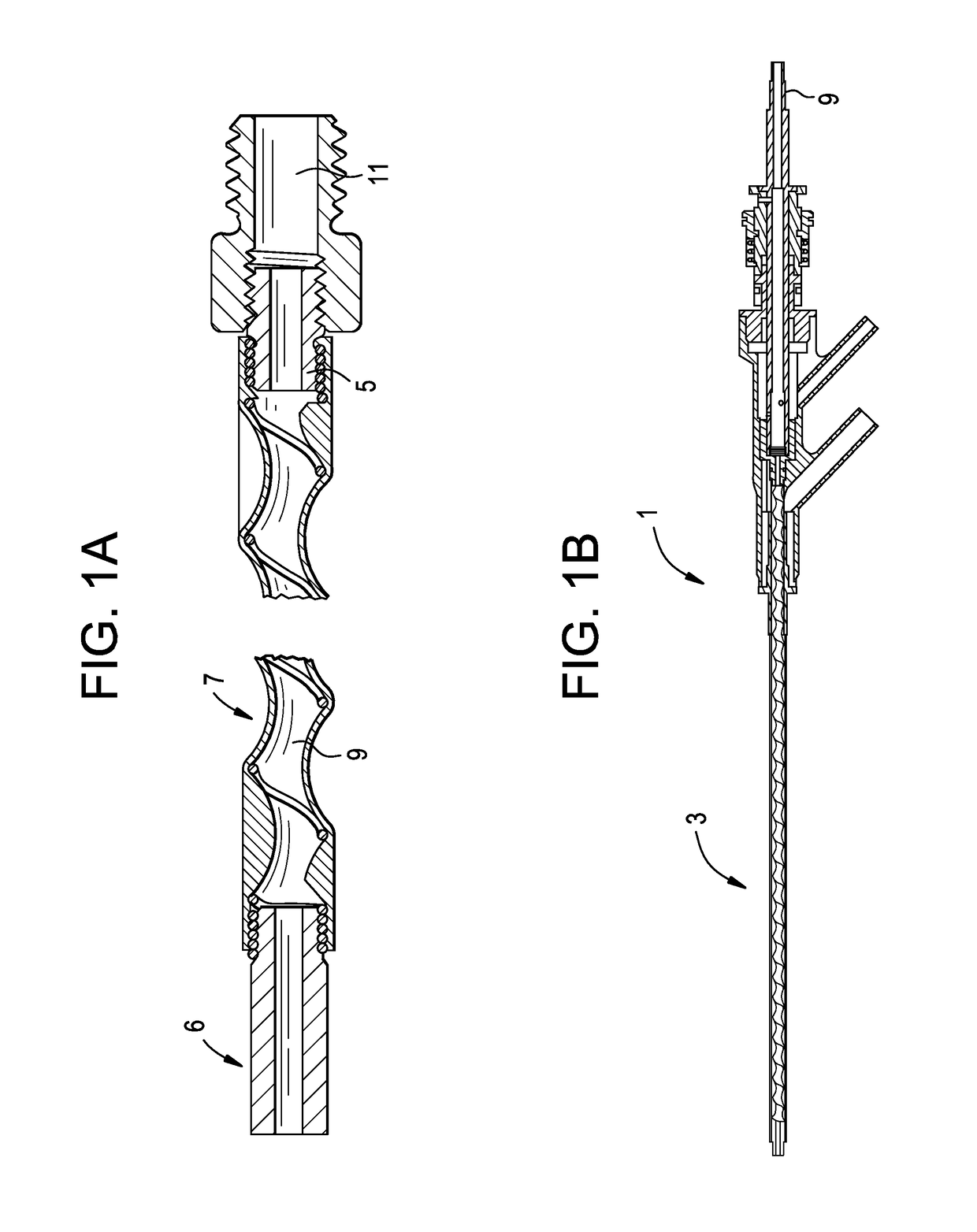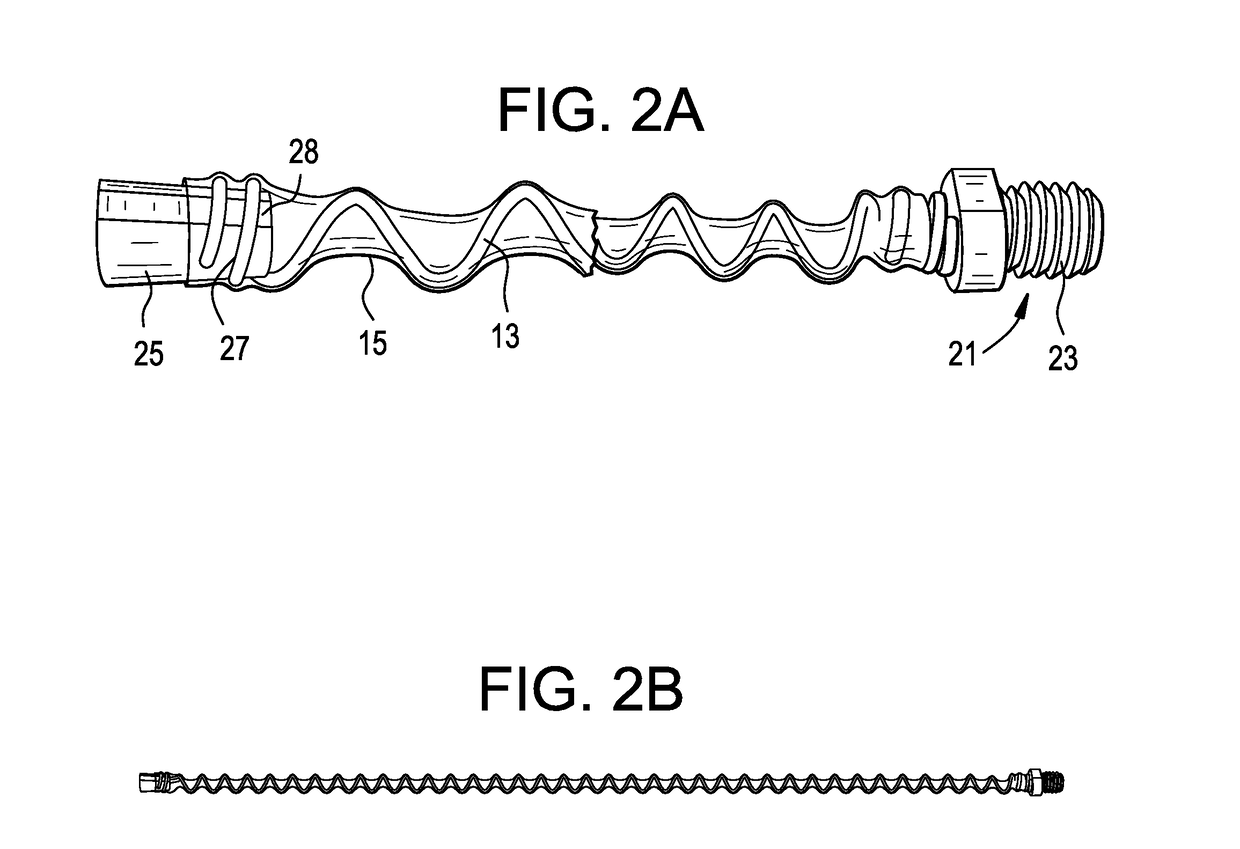Flexible transport auger
a technology of flexible transport and auger, which is applied in the field of flexible transport auger, can solve the problems of nerve irritation and pain, affecting the flow of waste products out of the disc, and causing the cell within the nucleus pulposus to emit toxic amounts of cytokines and mmps,
- Summary
- Abstract
- Description
- Claims
- Application Information
AI Technical Summary
Benefits of technology
Problems solved by technology
Method used
Image
Examples
first embodiment
[0093]In a first embodiment, the method comprises physically expanding a tube over a helical spring and then letting the tube contract. In this embodiment, the tube member in its initial state has an inner diameter ID that is smaller than the outer diameter OD of the spring. The tube can then be physically expanded in diameter by known methods (e.g., with high-pressure air, or with heat) until it reaches a dimension where its ID is larger than the OD of the spring. In this expanded condition, the tube is passed over the spring. When the force / energy upon the tube is removed, the tube in this assembly reverts to its original dimensions, except in the locations where it touches the helical spring member. The resulting product is an auger-like assembly with peaks and valleys.
[0094]Therefore, in accordance with the present invention, there is provided a method comprising the steps of:[0095]a) applying a physical force upon a tube to expand the tube,[0096]b) passing a helical spring into...
second embodiment
[0100]In a second embodiment, the method comprises radially compressing the helical spring and then applying heat to the spring to allow its stressed areas to expand to a larger diameter. In this embodiment, the helical spring's outer diameter is reduced from its resting state (e.g., by winding the helical spring very tightly, or by pulling the helical member and thereby producing an elongated spring having a smaller outer diameter). In this reduced-diameter configuration, the radially compressed spring can be inserted into the tube member. Upon release of the mechanical force causing diameter reduction, the helical spring reverts to its original dimensions. Because the tube member possesses some flexibility, the elastic nature of the tube allows it to be deformed by the pressure of the expanding helical member upon the tube ID. Another auger-like assembly with valleys and summits is thereby produced.
[0101]Therefore, in accordance with the present invention, there is provided a meth...
third embodiment
[0107]In a third embodiment, the method comprises simultaneously applying heat and vacuum to an ordinary polymeric tube to obtain the same effect as a heat shrink. In this embodiment, the tube member is made of a material that is not heat-shrinkable, but rather is plastically deformable under heat and so over time arrives at an elastomeric state. In this embodiment, the tube member has an inner diameter ID in its initial state that is larger than the outer diameter OD of the helical spring, so that the helical member can be inserted into the tube member. Once the spring is inside the tube, a low pressure region / vacuum is created inside of the tube member, and the tube member is heated at the same time. These conditions create deformation in the wall of the tube member caused by the vacuum pulling towards the center of the tube. This reduces the diameter of the tube member, except for the locations where the helical member contacts the inside of the tube and so prevents deformation o...
PUM
 Login to view more
Login to view more Abstract
Description
Claims
Application Information
 Login to view more
Login to view more - R&D Engineer
- R&D Manager
- IP Professional
- Industry Leading Data Capabilities
- Powerful AI technology
- Patent DNA Extraction
Browse by: Latest US Patents, China's latest patents, Technical Efficacy Thesaurus, Application Domain, Technology Topic.
© 2024 PatSnap. All rights reserved.Legal|Privacy policy|Modern Slavery Act Transparency Statement|Sitemap



